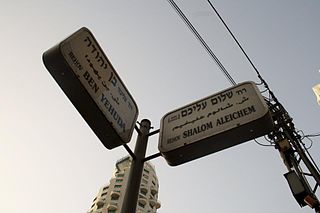Dating of the Dead Sea Scrolls is done by a variety of methods. Obviously, any individual scroll can be no older than the youngest component used in that scroll. However, no scholar dates the majority of the scrolls in the second century. In fact, the vast majority of the scrolls, based on the methods below for both material and composition, date from the BC era.
Radiocarbon Dating
Even though a piece of linen from the caves gave a date range of 167 BC to AD 233, tests on the scrolls themselves gave different results. These tests give a date range for the material used. It can only give a range because the isotope tested for absorption and release fluctuates during the year. The test must be calibrated. The results in the column are given with a 95% accuracy. That is, the odds are 95% that the scroll was made in that date range. Some of the ranges are quite large, spanning centuries.
Paleographic (Handwriting) Dating
By examining the handwriting of the scrolls (which is the same as time of composition), dates were given between 225 BC and AD 50. These dates were determine by size, shape, and style of the text. That is, over the centuries, certain letters were done differently. While the chart at the link shows the major changes over time, it leaves out some of the minor changes (for example, it leaves out the crowns variant that was popular during part of the Aramaic Square period). Radiocarbon dating of these same fragments estimated the dates of the material used between 385 BC and AD 85.
Conditions of the Find
Even though there are a few dissenting voices as to the identity of the authors (as to what group they belonged to), almost all scholars recognize that the scrolls were written by the Essenes. The scrolls were found in caves and earthenware jars and some of them had been damaged by the Roman armies the Essenes fled from (a lance strike slashed one of the scrolls). This flight took place ca. AD 68. Qumran was abandoned after that. As word of the approaching armies came, the scrolls were placed in earthen jars and hidden in the caves. This was all done around the time of AD 68.
Contents of the Scrolls
That the scrolls were written by the Essenes is the conclusion of the majority of scholars. Handwriting analysis of the scrolls from the caves and other documents found at the Qumran settlement itself show that the places are linked.
Jesus refers to a document known only from Qumran (War Between the Sons of Light and the Sons of Darkness commonly known as War Scroll) when he taught "While you have the light, believe in the light, that you may become sons of light" (John 12:36). Mainly from references within the text of the scroll itself, scholars date War Scroll ranging from the second century BC to the early decades of the first century AD. The range depends on if the weapons and tactics described are Roman (dating 65 BC to AD ~5) or Seleucid (second century BC).
Some of the scrolls contain material that helps in dating them. For example, 4QMMT contains a list of differences and agreements between the Essenes and both the Pharisees and the Sadducees. One section even takes the form of a letter. This scroll is in Hebrew and respectfully addresses an individual with warnings to remember the "blessings and curses" that befell the Israelite kings. The recipient is almost certainly a Hasmonean King as they were the last native dynasty to rule over the Land. It was established as fully autonomous by Simon Maccabeus ca. 140 BC (though the dynasty had been ruling under the allowance of foreign kings since the mid 160s) and lasted with various levels of autonomy until the Herodian Dynasty (a family of Edomites) finally took control in 37 BC.
A section of this scroll may even be from the founder of the community, The Teacher of Righteousness, to the Wicked Priest (hypothesized to be the Hasmonean Jonathan Apphus). Jonathan Apphus ruled as High Priest beginning in 153 BC.
Conclusion
Remarkable amounts of evidence from various methods date the scrolls as composed between 225 BC and AD 50 (though material composed after AD 30 is copies of prior material, no new material [such as Pesher] is composed after that). The destruction of the community in AD 68 or shortly after also gives an upper bound to the scrolls composition.
As the scrolls are written in the first century and before in Aramaic, Greek, and Hebrew (the majority), yes, they show that all those languages were known among the people of Israel.
